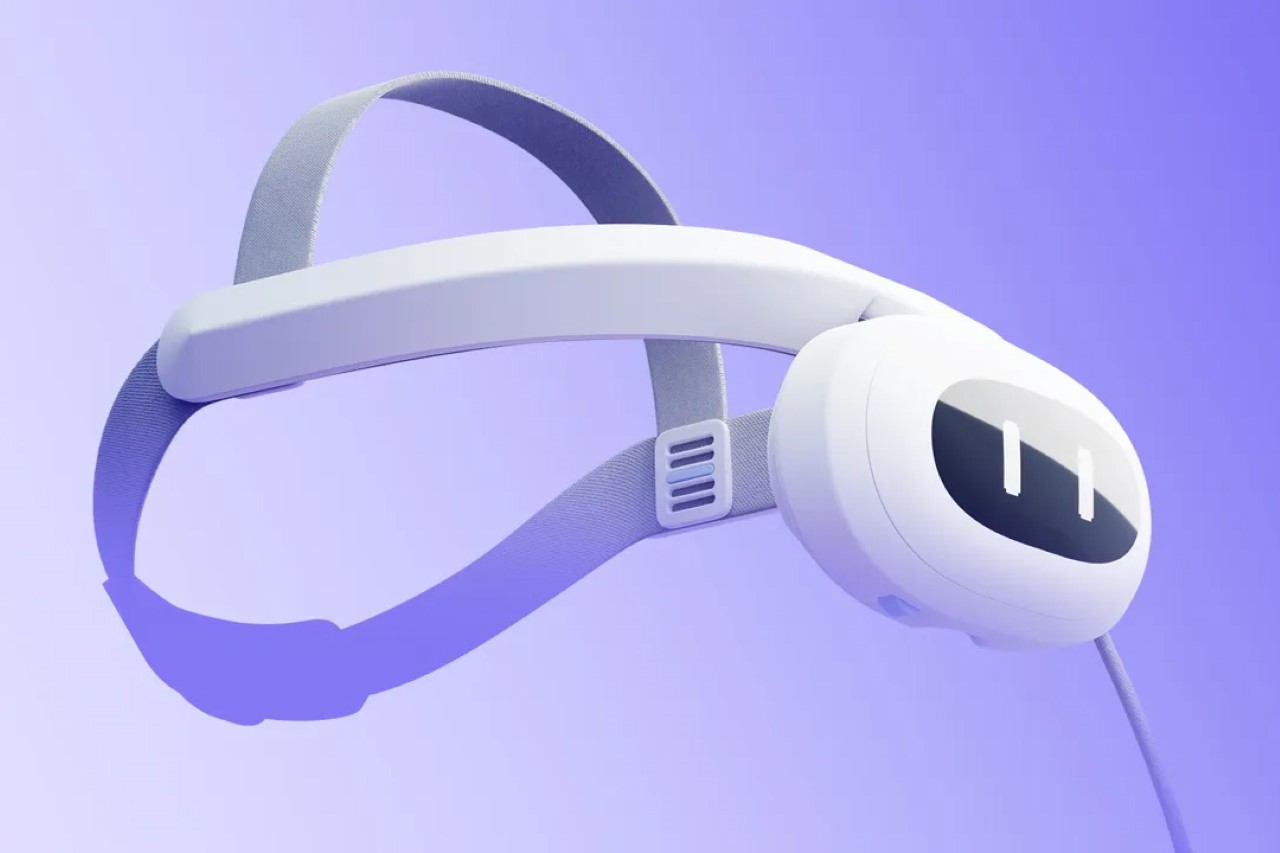This ‘Office VR Headset’ focuses on productivity without cutting the real world out - 3 minutes read

Immersive VR is great for entertainment… but for work, not that much. The idea is to be able to interact with spatial elements, but not have them completely cut you off from the real world. Just the way a laptop screen or desktop monitor offers you only with a window of productivity but still gives you the option of stepping away to attend meetings, talk to coworkers, or take notes/make doodles, this VR headset concept from Umeå Institute of Design student Simon Ljungblahd lets you easily switch between real and spatial life.
The VR headset features a familiar design, but instead of having screens strapped to your eyes, this one mounts them on a visor-style hinge that you can flip upwards when not in use, allowing yourself to engage with the real world. Meanwhile, a screen on front acts much like the one found on the Vision Pro, giving people around you a sense of your status, whether you’re busy, free, or even when you’re up for a coffee break!
Designer: Simon Ljungblahd
The headset’s design is relatively lightweight, with a display unit that doesn’t need to be bulky because it doesn’t wrap around your eyes, cutting light from the outside world out. It sits ahead of you almost like a HUD (Heads-up Display), giving you the spatial experience just within a portion of your PoV, like a desktop monitor would. Except, you can move your head around to see more of the spatial environment around you. Or look through the corner of your eye to see the real world. When you want to quickly leave the simulation, flip the headset up and you’re out of virtual reality.
“As screen resolution on these devices increases, the use-case of work, or productivity, becomes more interesting as it enables users to view interfaces with a high density of information, which is necessary for that use-case. Spatial Computing would allow users to have a full 360-degree interface and with depth, which would enable much richer multi-tasking,” says Simon. “The depth aspect would also potentially create more intuitive interfaces when it comes to use cases like 3D modeling, or map viewing. The Spatial Computing headsets that are made for entertainment, social experiences, and simulations are designed to optimize the user experience for those use-cases, but so far, no headset on the market is made to focus solely on the use-case of productivity.”
The headset is unique in that it offers the best of both VR headsets and desktop monitors. VR headsets keep you locked in an environment that can affect your productivity by cutting the real world out, but also give you a sense of fatigue with too much use. Laptops and desktop monitors, on the other hand, don’t give you unlimited virtual space for multiple tabs/windows and the ability to work in 3D. Simon’s design therefore strikes a clever balance between the two. Besides, I love the idea of the display on the front of my headset being used to let others know whether I’m busy, free, or up for a quick break in between work sessions!
Source: Yanko Design
Powered by NewsAPI.org